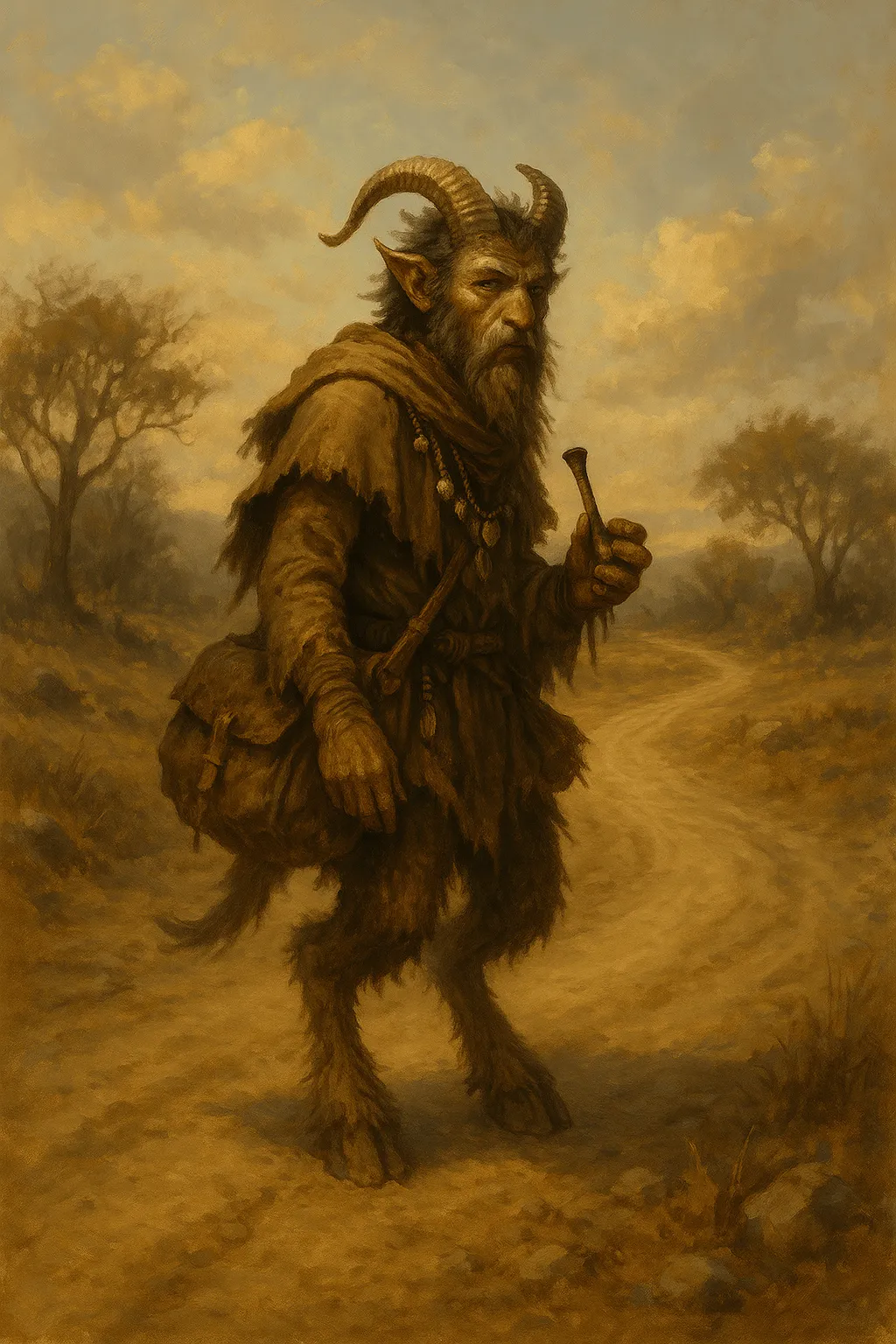
Carries no banner, claims no home, just a song half-hummed and a path half-known.
Among the many beings tied to the wild, there exists a curious kind of wanderer whose presence is felt more often in dusty crossroads than enchanted groves. Known in most circles as a Dusthoof Satyr, this creature blends the whimsy of fey origin with the grit of long travel. They are neither emissaries nor exiles, but something older and less defined—walkers between moods, bearers of laughter and sorrow in equal weight.
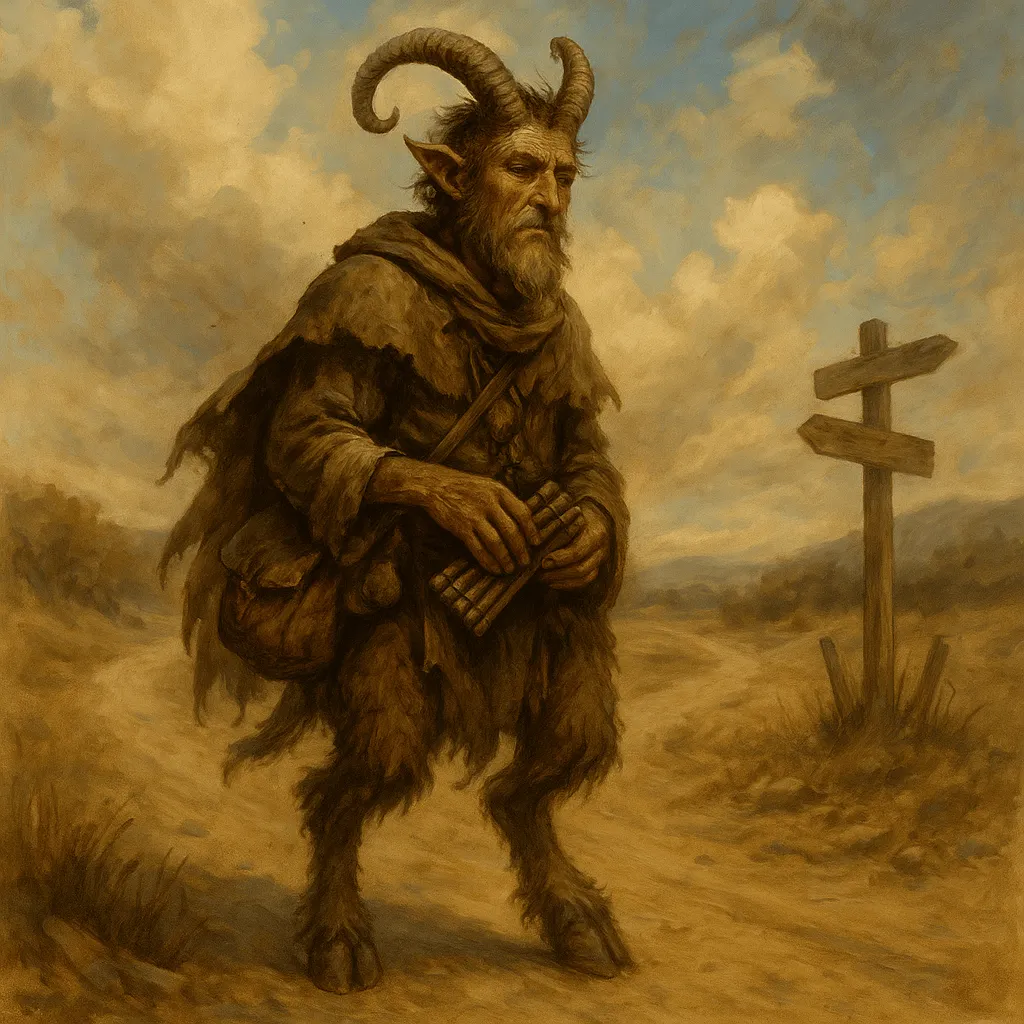 To understand the Dusthoof, one must first understand the satyr, though this is no small task. Satyrs, broadly speaking, are fey beings—horned, hooved, and humanoid in shape—who defy easy categorization. Unlike elves who trace noble lineages or dryads who guard fixed groves, satyrs are creatures of movement, mood, and music. They carry no banners, swear no fealty, and build nothing permanent. Their allegiance is to impulse, their loyalty to the present moment.
To understand the Dusthoof, one must first understand the satyr, though this is no small task. Satyrs, broadly speaking, are fey beings—horned, hooved, and humanoid in shape—who defy easy categorization. Unlike elves who trace noble lineages or dryads who guard fixed groves, satyrs are creatures of movement, mood, and music. They carry no banners, swear no fealty, and build nothing permanent. Their allegiance is to impulse, their loyalty to the present moment.
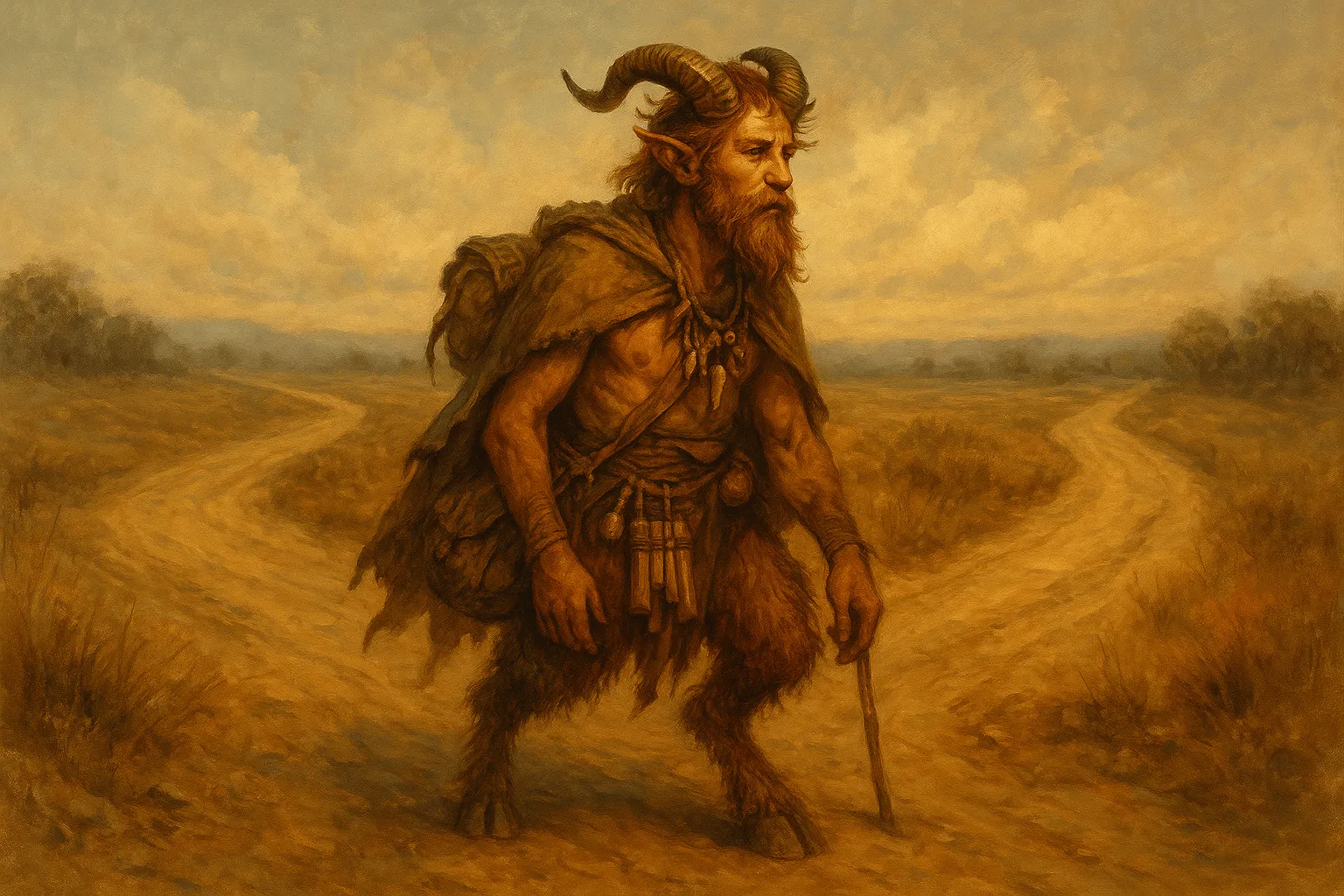 The Dusthoof variant, in particular, is a more subdued offshoot of this already ungovernable race. Where typical satyrs exude spring's unchecked revelry—barrel-chested laughter, floral-scented sweat, and flutes that compel even stone to dance—the Dusthoof is marked by endurance rather than ecstasy. They travel, always. They rest, briefly. And where they go, a strange calm settles behind them, as if some inner ache has been gently soothed and left behind on the trail.
The Dusthoof variant, in particular, is a more subdued offshoot of this already ungovernable race. Where typical satyrs exude spring's unchecked revelry—barrel-chested laughter, floral-scented sweat, and flutes that compel even stone to dance—the Dusthoof is marked by endurance rather than ecstasy. They travel, always. They rest, briefly. And where they go, a strange calm settles behind them, as if some inner ache has been gently soothed and left behind on the trail.
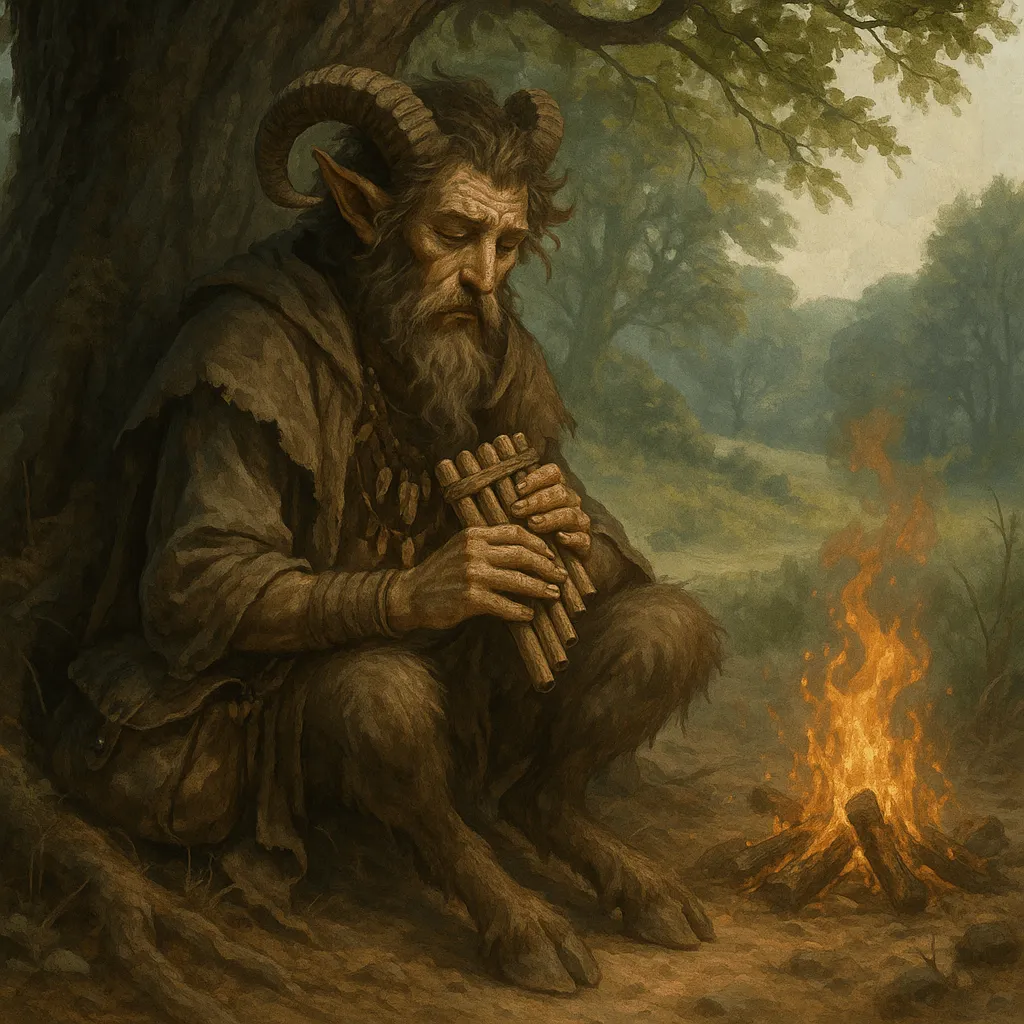 A Dusthoof Satyr is not easily mistaken for anything else, but one could almost believe they were a tired trickster god dressed in goat-skin. Their bodies are leaner than their reveling cousins, shaped not by indulgence but by distance. Their fur takes on the color of beaten trails—dusty umber, ash gray, or sun-cracked gold. They wear what they carry: travel-stained cloaks, layered necklaces made of teeth and buttons, weathered satchels with unnamable contents. Their instruments are always on-hand—a cracked fiddle, a dented horn, or panpipes so old they may have once been bones. Their eyes are knowing, but not cruel. Their smiles, when they come, are often slow and sad, as if remembering a joke told too long ago to retell.
A Dusthoof Satyr is not easily mistaken for anything else, but one could almost believe they were a tired trickster god dressed in goat-skin. Their bodies are leaner than their reveling cousins, shaped not by indulgence but by distance. Their fur takes on the color of beaten trails—dusty umber, ash gray, or sun-cracked gold. They wear what they carry: travel-stained cloaks, layered necklaces made of teeth and buttons, weathered satchels with unnamable contents. Their instruments are always on-hand—a cracked fiddle, a dented horn, or panpipes so old they may have once been bones. Their eyes are knowing, but not cruel. Their smiles, when they come, are often slow and sad, as if remembering a joke told too long ago to retell.
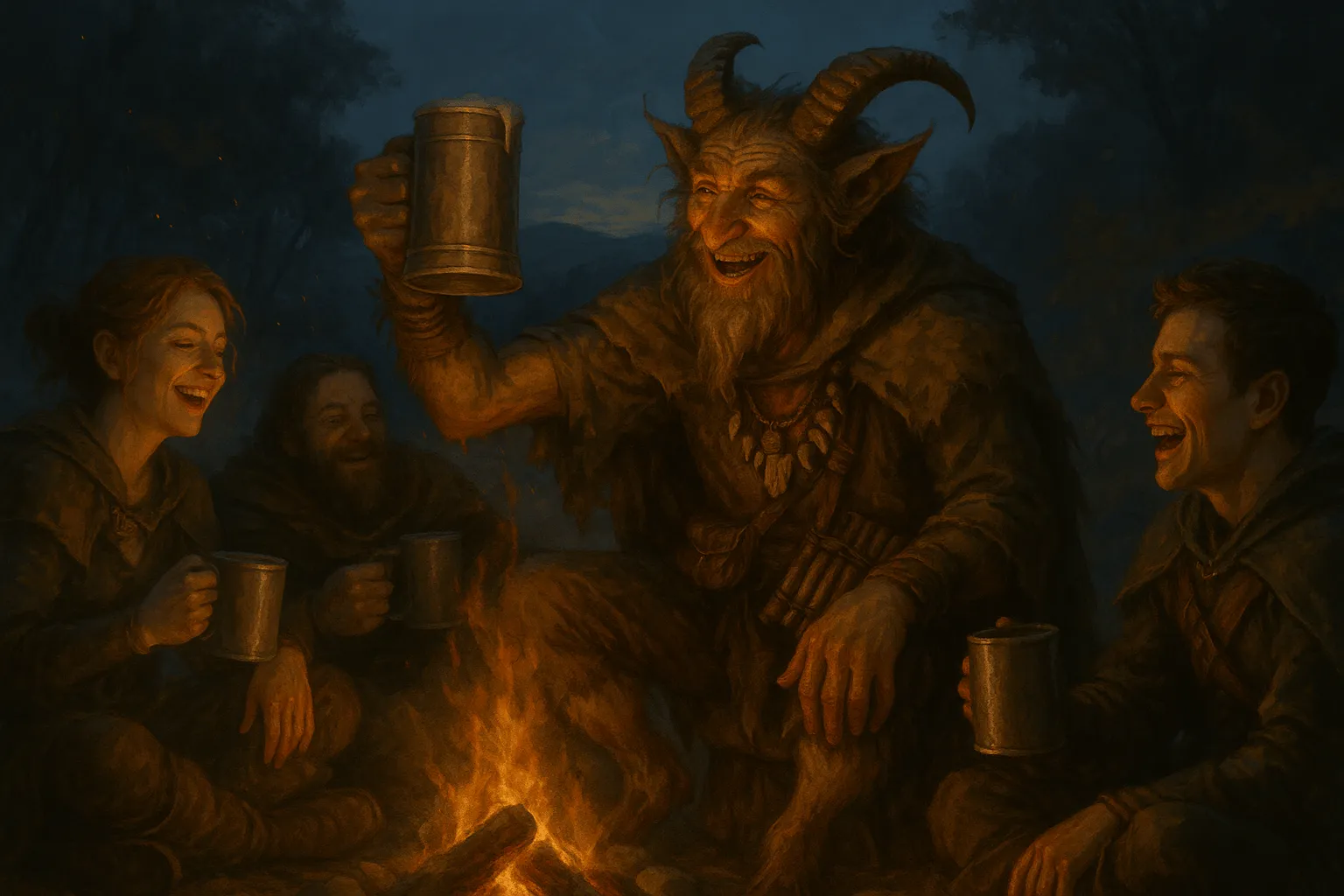 Dusthooves are wanderers not by profession but by nature. They do not claim roads, but roads claim them. They sleep in haylofts, under wagons, or curled inside abandoned grain bins. Wherever people gather near the edge of nowhere, a Dusthoof may appear—sometimes announced by music, sometimes by the absence of quarrel. Unlike most satyrs, Dusthooves rarely initiate mischief. Their magic is subtler: the sudden urge to sing, the inexplicable warmth of a campfire, or the feeling that perhaps you’re not as alone as you thought. They mend morale, not fences. While they will steal, it is never for greed—only for things left unloved. They prefer to find what they need, and often return items in better condition, or stranger.
Dusthooves are wanderers not by profession but by nature. They do not claim roads, but roads claim them. They sleep in haylofts, under wagons, or curled inside abandoned grain bins. Wherever people gather near the edge of nowhere, a Dusthoof may appear—sometimes announced by music, sometimes by the absence of quarrel. Unlike most satyrs, Dusthooves rarely initiate mischief. Their magic is subtler: the sudden urge to sing, the inexplicable warmth of a campfire, or the feeling that perhaps you’re not as alone as you thought. They mend morale, not fences. While they will steal, it is never for greed—only for things left unloved. They prefer to find what they need, and often return items in better condition, or stranger.
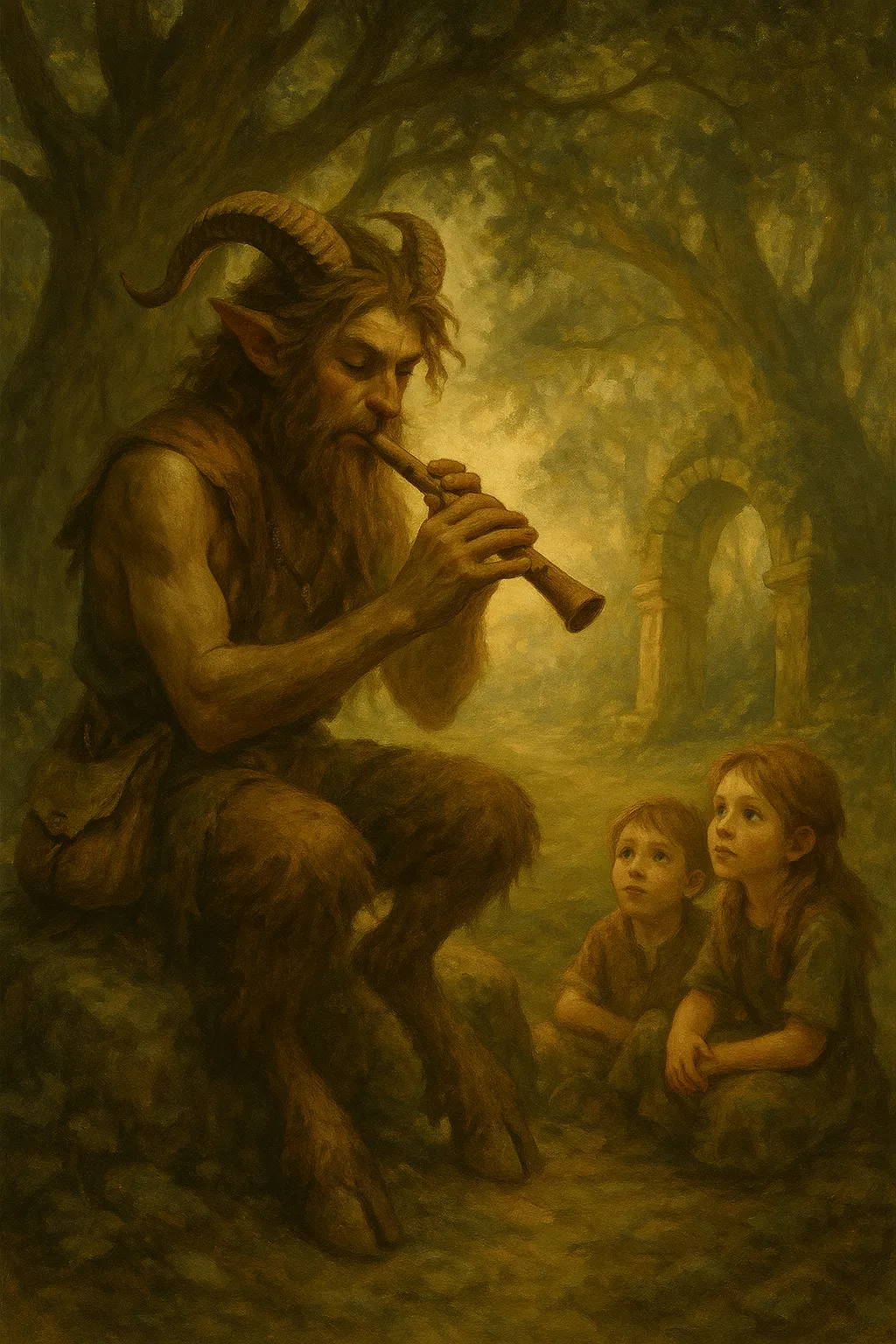 They avoid violence where possible. Should conflict arise, they flee rather than fight, disappearing behind sound and dust like vanishing mirages. Only when cornered—or when protecting something sacred to them, like a child’s smile or a silent widow’s garden—do they bare their hooves and horns.
They avoid violence where possible. Should conflict arise, they flee rather than fight, disappearing behind sound and dust like vanishing mirages. Only when cornered—or when protecting something sacred to them, like a child’s smile or a silent widow’s garden—do they bare their hooves and horns.
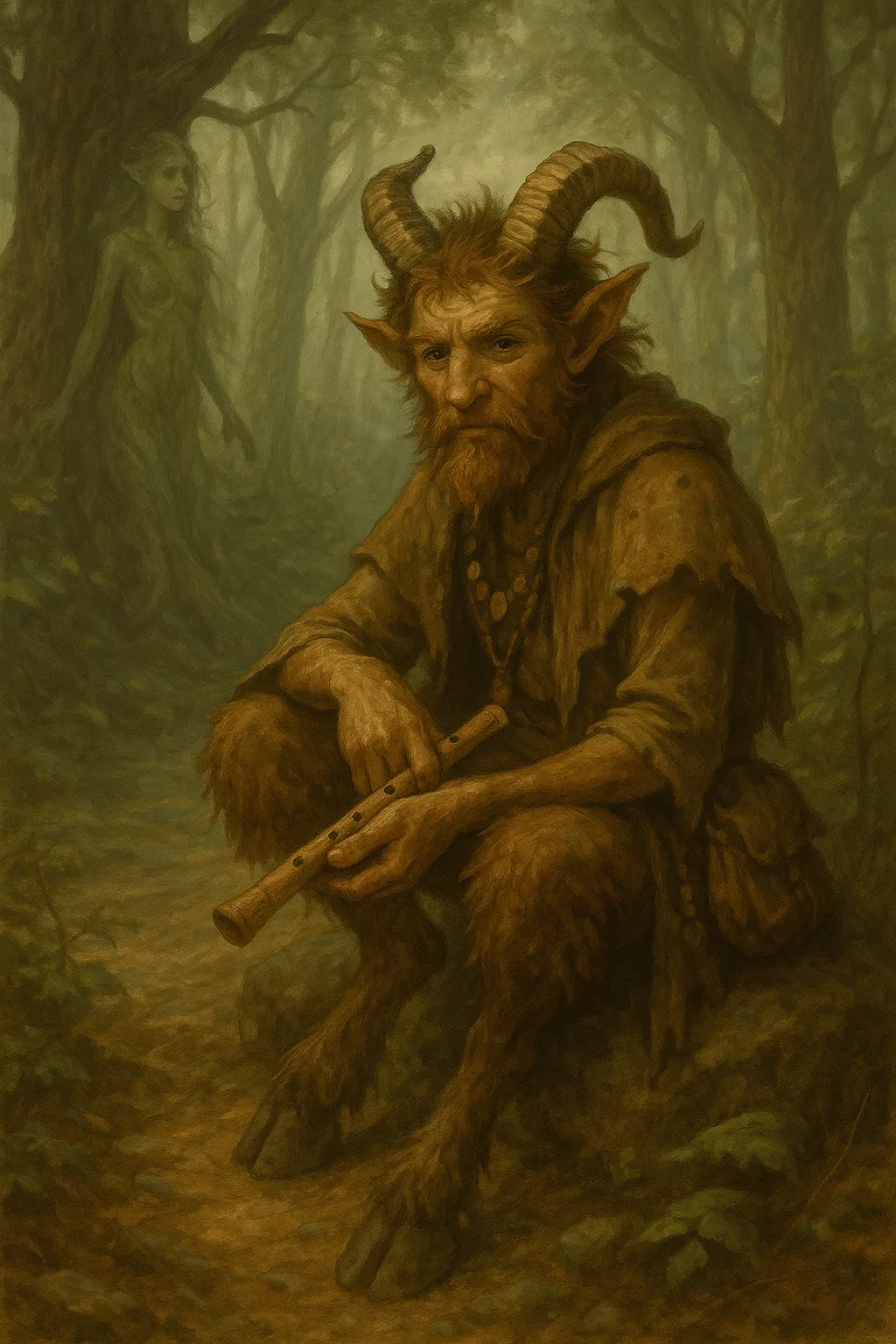 Though not practitioners of formal magic, Dusthoof Satyrs are undeniably fey. Their connection to the emotional currents of the world is instinctual. Unlike court-aligned fey who wield glamours or weaponized contracts, Dusthooves influence through resonance. A sad song played at the right moment can still a riot. A foot tap during a tense council can break stalemates before words are spoken. They are emotional alchemists, tuning the world through rhythm. It is said they can smell grief and hear lies, though they rarely accuse. Instead, they sing truths the listener already knows, bringing clarity without confrontation. Some theorize this ability stems from residual energy carried through generations of silent observation—a kind of empathic echo passed down in song and hoofbeat.
Though not practitioners of formal magic, Dusthoof Satyrs are undeniably fey. Their connection to the emotional currents of the world is instinctual. Unlike court-aligned fey who wield glamours or weaponized contracts, Dusthooves influence through resonance. A sad song played at the right moment can still a riot. A foot tap during a tense council can break stalemates before words are spoken. They are emotional alchemists, tuning the world through rhythm. It is said they can smell grief and hear lies, though they rarely accuse. Instead, they sing truths the listener already knows, bringing clarity without confrontation. Some theorize this ability stems from residual energy carried through generations of silent observation—a kind of empathic echo passed down in song and hoofbeat.
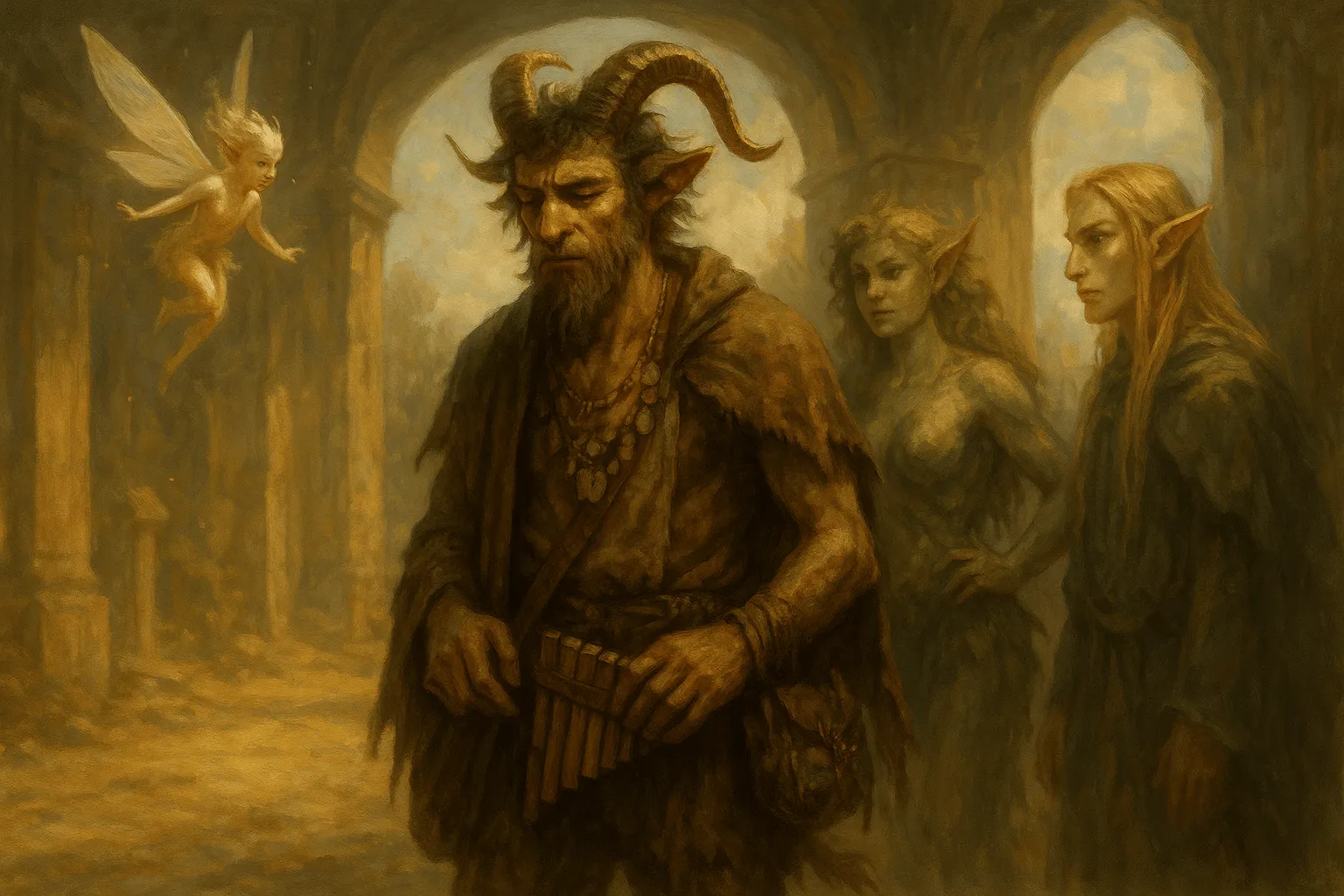 Within the fey courts, Dusthoof Satyrs are regarded as nonaligned neutrals. They do not attend revels often, but when they do, they bring silence before storms or joy after exhaustion. Archfey find them puzzling and a touch melancholy—useful, but uncooperative. Dryads sometimes welcome them as seasonal guests, particularly in regions where woodland edges meet open fields. Pixies tend to play tricks on them, but are surprised when the Dusthoof plays along in ways that leave everyone more confused than amused. Eladrin, ever the hierarchy-minded, consider them irresponsible but occasionally seek their aid when diplomacy demands a subtle emotional turn.
Within the fey courts, Dusthoof Satyrs are regarded as nonaligned neutrals. They do not attend revels often, but when they do, they bring silence before storms or joy after exhaustion. Archfey find them puzzling and a touch melancholy—useful, but uncooperative. Dryads sometimes welcome them as seasonal guests, particularly in regions where woodland edges meet open fields. Pixies tend to play tricks on them, but are surprised when the Dusthoof plays along in ways that leave everyone more confused than amused. Eladrin, ever the hierarchy-minded, consider them irresponsible but occasionally seek their aid when diplomacy demands a subtle emotional turn.
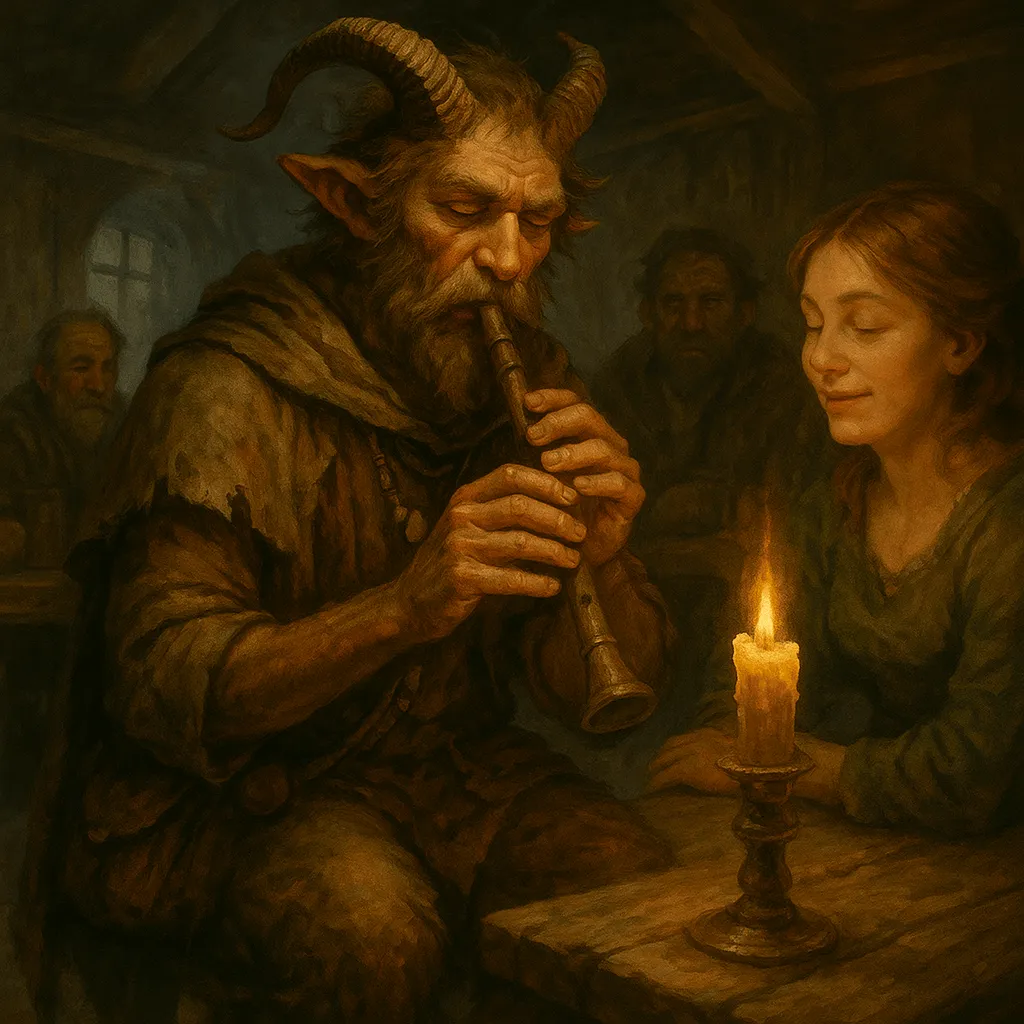 Among mortals, Dusthooves are folk legends. Farmers leave out cider for them. Travelers speak of being led to shelter by hoofprints that vanish in dry earth. Children claim they hear them humming lullabies in dusty attics. Priests argue over their morality, scholars over their classification. But bards? Bards write about them constantly.
Among mortals, Dusthooves are folk legends. Farmers leave out cider for them. Travelers speak of being led to shelter by hoofprints that vanish in dry earth. Children claim they hear them humming lullabies in dusty attics. Priests argue over their morality, scholars over their classification. But bards? Bards write about them constantly.
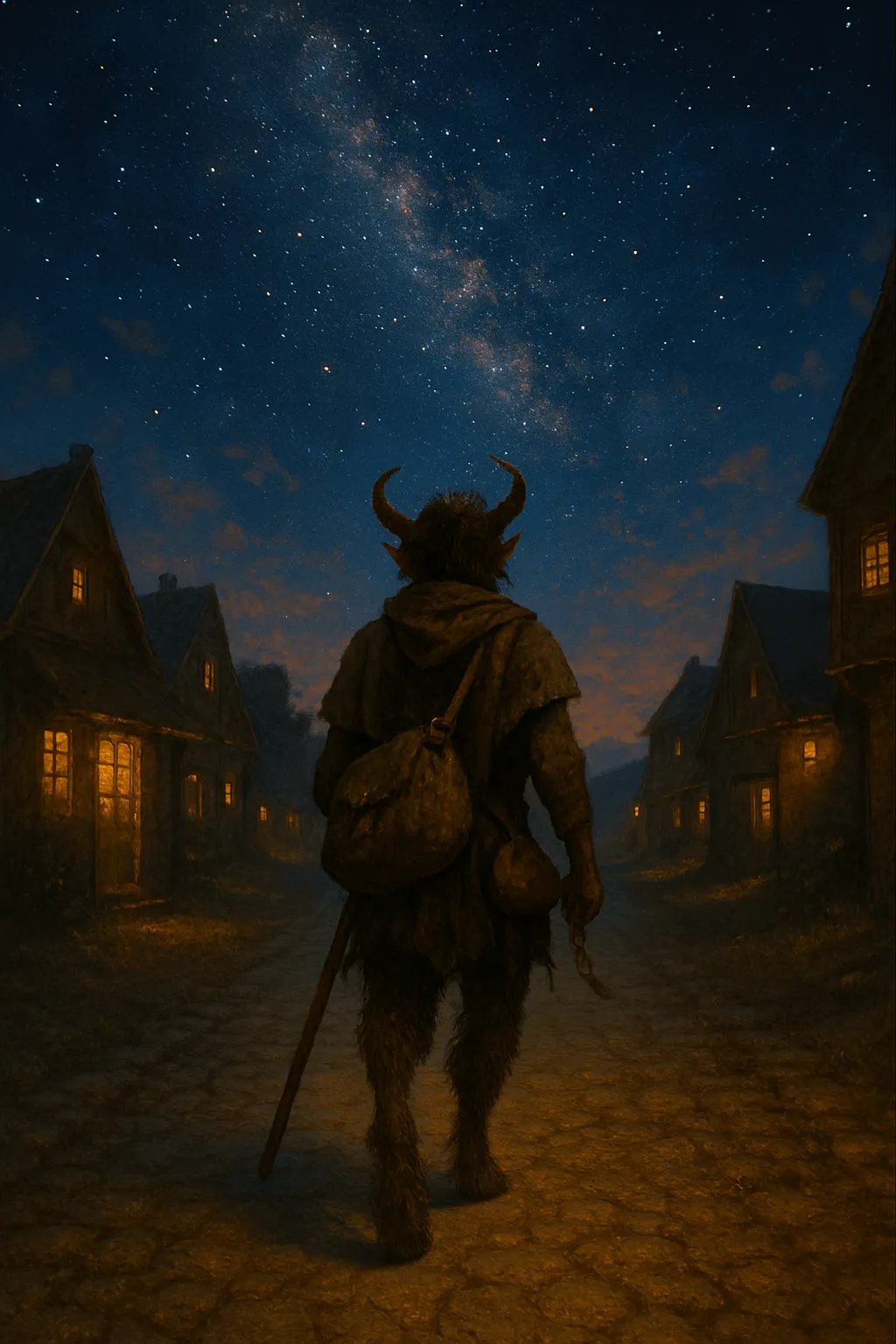 Many believe Dusthooves are born where the road meets the feywild—at the exact threshold between one world and the next. Others say they are satyrs who lost something so profound, they could no longer dance in place. A third belief, whispered among older druids, claims Dusthooves are walking songs given flesh. They are not known to raise families. Any young they have tend to vanish into stories or reappear generations later carrying a parent’s flute. Some suspect they can’t die in the traditional sense, only fade—becoming rhythm, wind, or the smell of warm dust in sunlit places no one remembers building.
Many believe Dusthooves are born where the road meets the feywild—at the exact threshold between one world and the next. Others say they are satyrs who lost something so profound, they could no longer dance in place. A third belief, whispered among older druids, claims Dusthooves are walking songs given flesh. They are not known to raise families. Any young they have tend to vanish into stories or reappear generations later carrying a parent’s flute. Some suspect they can’t die in the traditional sense, only fade—becoming rhythm, wind, or the smell of warm dust in sunlit places no one remembers building.
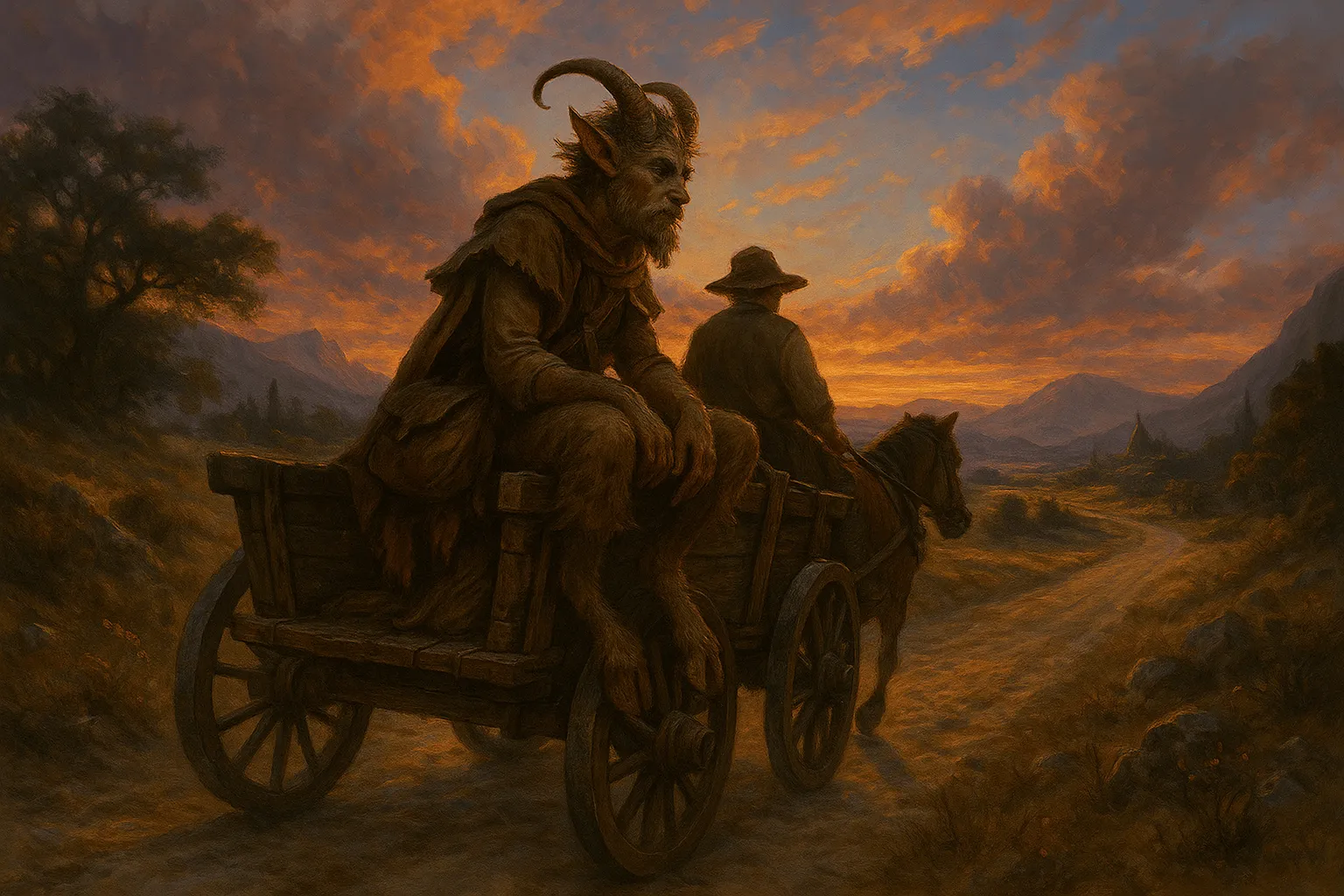 Despite their rarity and unpredictability, Dusthoof Satyrs are sometimes sought after by kings, outlaws, and healers alike. Kings want their influence at negotiations. Outlaws hope their presence deflects search parties. Healers believe they can soothe dying minds. But Dusthooves do not stay. They can be spoken with, aided, followed for a time. But never owned. Never kept.
Despite their rarity and unpredictability, Dusthoof Satyrs are sometimes sought after by kings, outlaws, and healers alike. Kings want their influence at negotiations. Outlaws hope their presence deflects search parties. Healers believe they can soothe dying minds. But Dusthooves do not stay. They can be spoken with, aided, followed for a time. But never owned. Never kept.
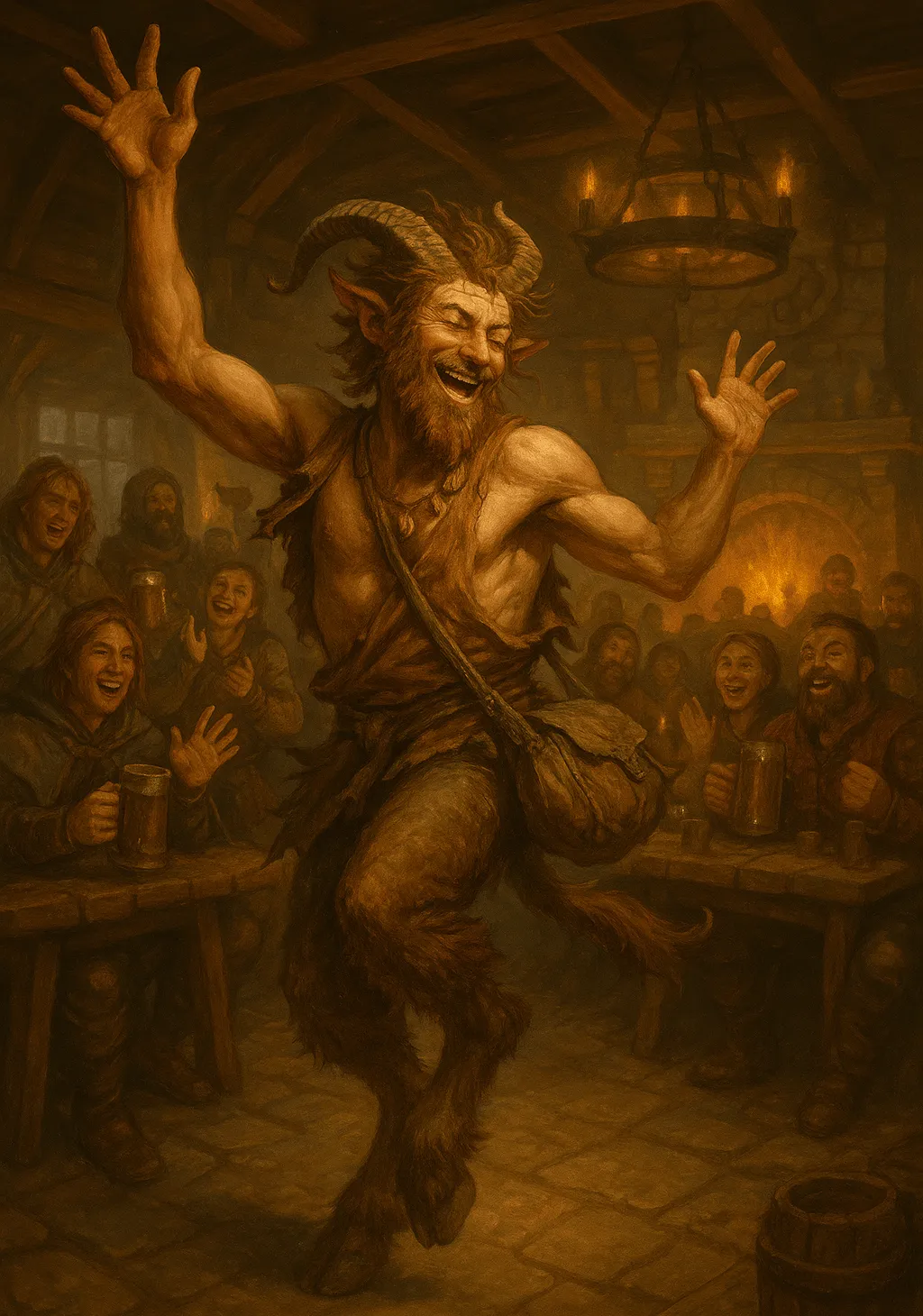 In a world of screaming steel, divine verdicts, and fire-breathing ruin, the Dusthoof Satyr offers something less glamorous and more essential: presence. They arrive where they are needed—not to fix, not to lead, but to remind. That we are alive. That stories are still being told. That somewhere in the dust, a dance waits to be remembered.
In a world of screaming steel, divine verdicts, and fire-breathing ruin, the Dusthoof Satyr offers something less glamorous and more essential: presence. They arrive where they are needed—not to fix, not to lead, but to remind. That we are alive. That stories are still being told. That somewhere in the dust, a dance waits to be remembered.
And when they leave, the road always feels different—not repaired, but acknowledged.
The following magical heirlooms are fictional and lore-based in nature. Each one is an affiliate link to a real-world item on Amazon that we've hand-selected to complement this artifact's lore.


If you click a link and buy an item, we may earn a commission.It costs you nothing extra, but can help keep this little corner of the internet glowing.
What does this mean?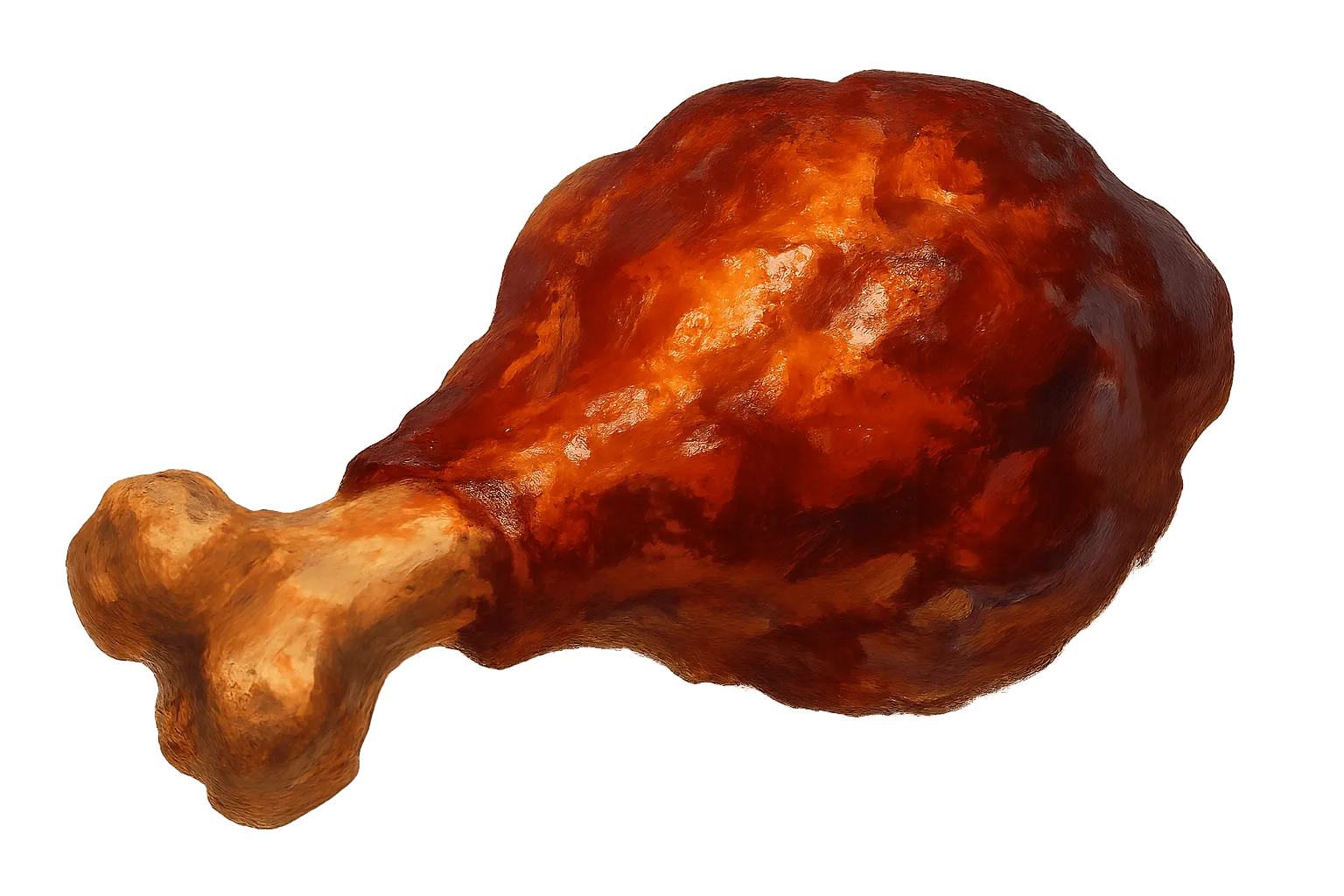
Restores a medium amount of HP. Grants +2 to chewing.
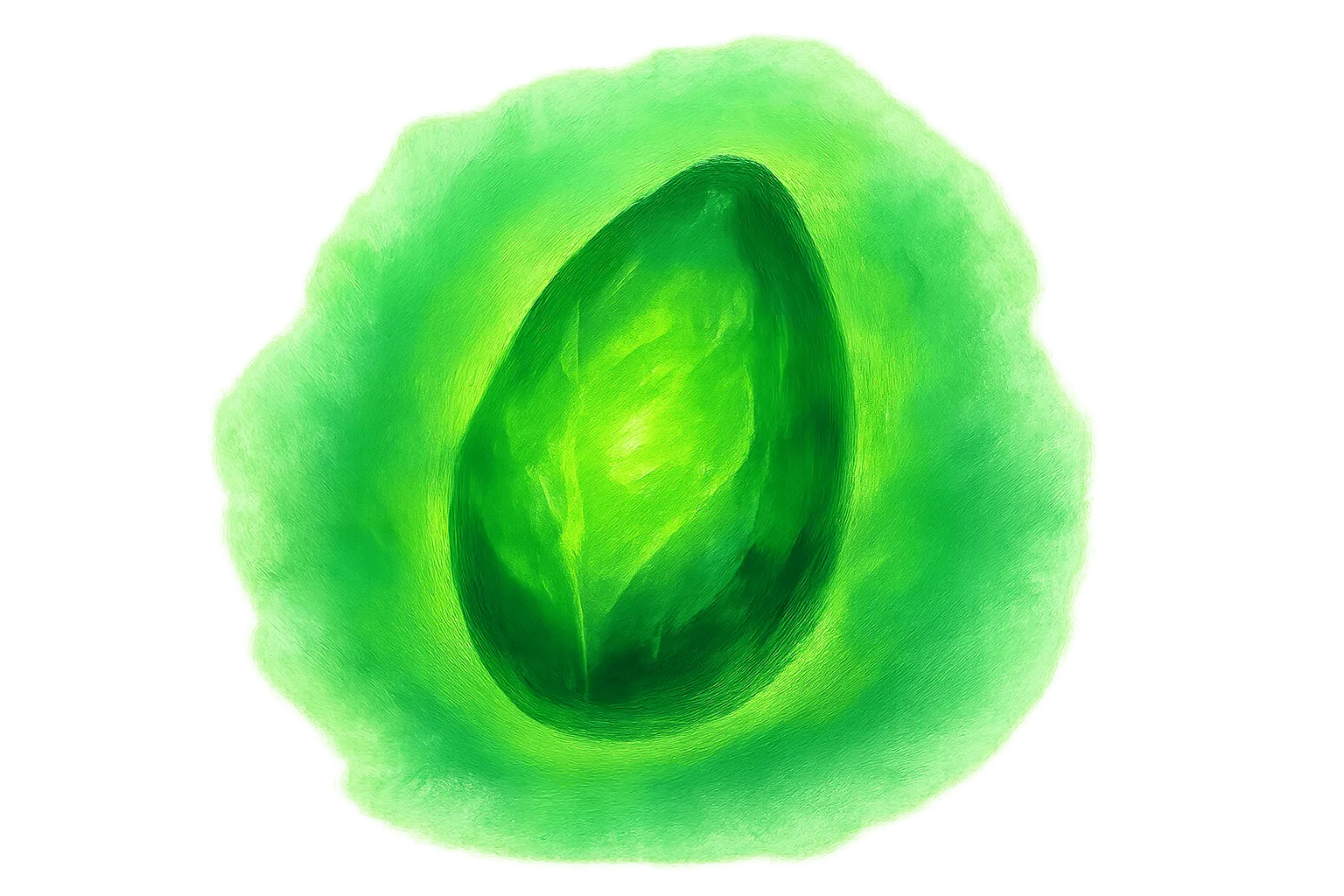
A seed capable of growing a large tree with a series of connected rooms and balconies.
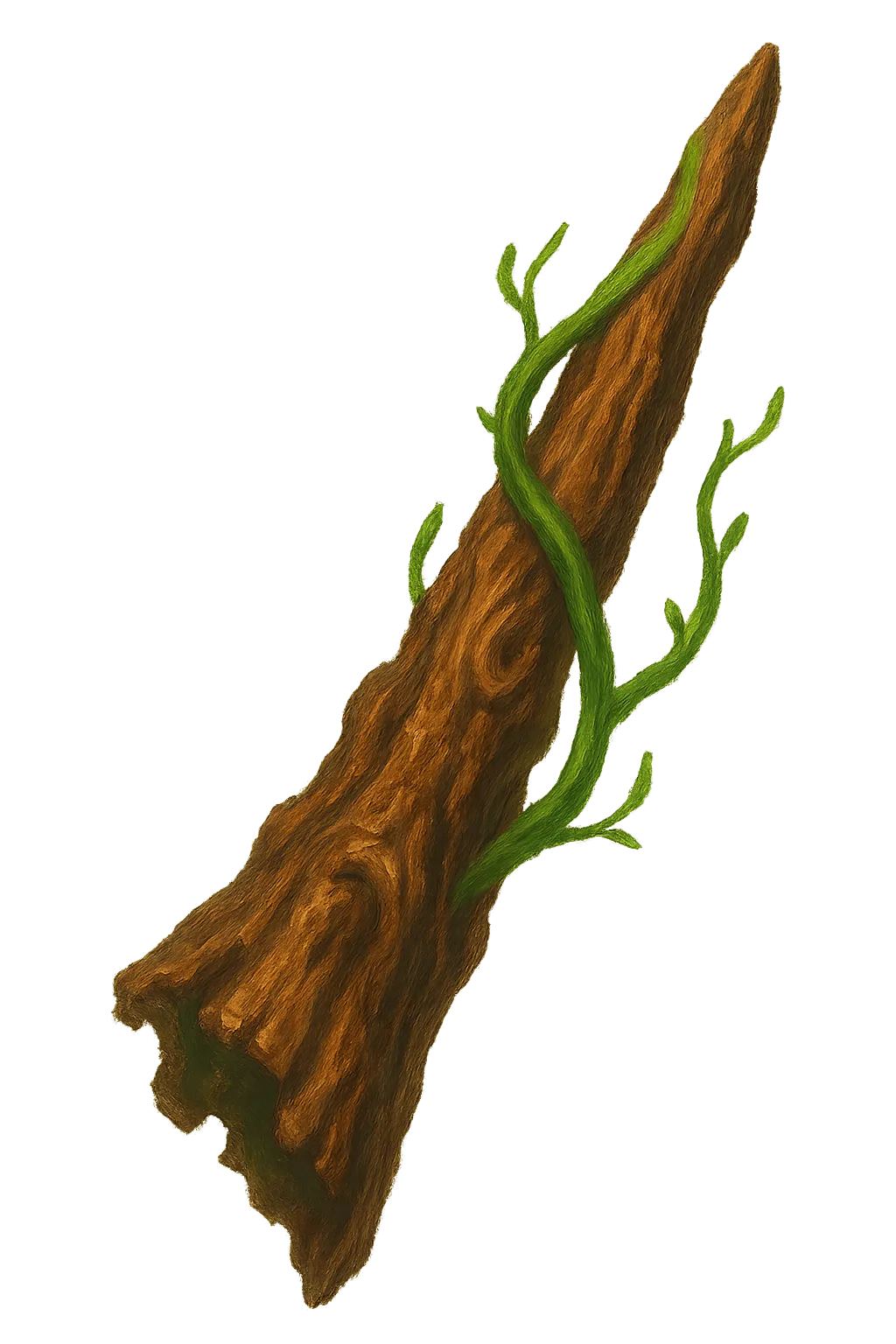
Once part of an elder. Now bends vines and beasts to your will.
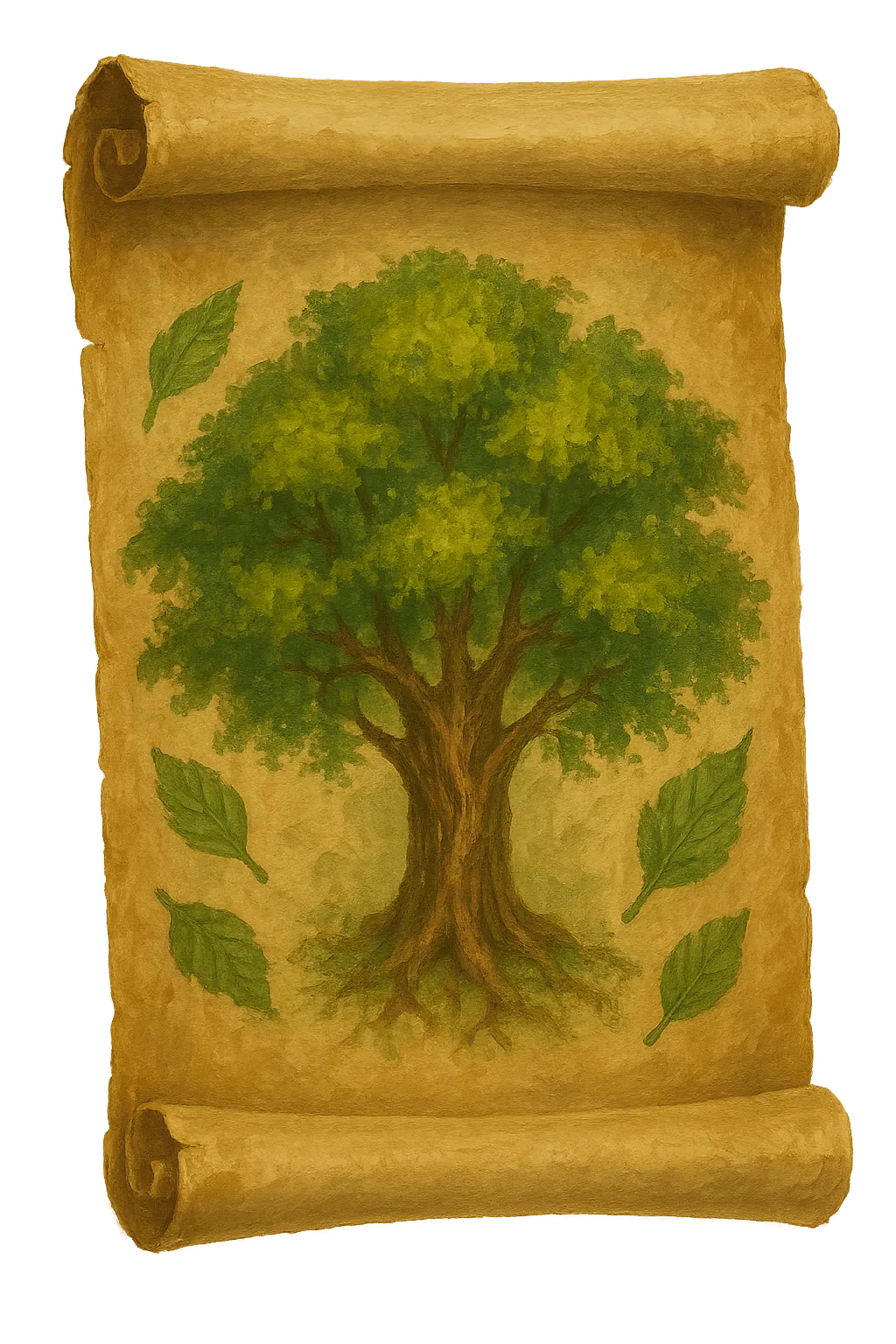
Summons 3 small saplings. They're not particularly ferocious, but they are cute and distracting.










